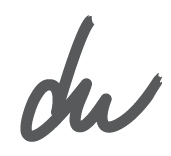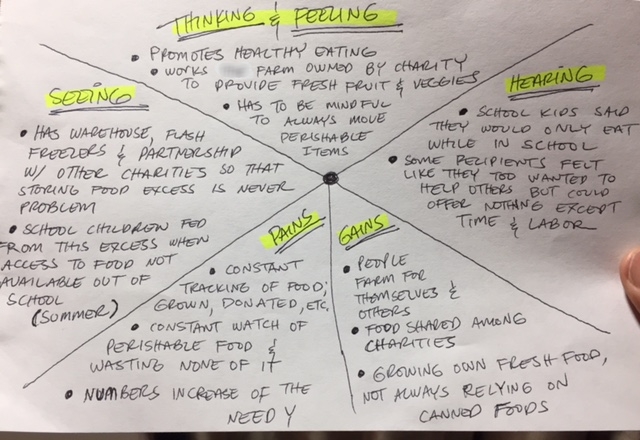Dignity Meals is an app that connects food donors (with excess food, that is fresh, untouched and safe for consumption) with volunteers in their local areas to redistribute this normally wasted food to charities and organizations that serve needy families. The proposed application will help food donors from all over - restaurants, grocery stores, churches, private functions and more - to donate food (in a timely, safe, and easy-to-use way) to those who need it.
My role was to research, design and test all UIs related to the project. I collaborated and received counsel from my mentor, Andrew West, to develop this project.
The Chicago-based startup, “Dignity Meals” seeks the development of an app to help in their overall effort to combat hunger - first starting in their local area and then possibly branching out if the service appears successful.
The initial goal of collecting “recovered” food from donors (restaurants, churches, grocery stores, etc.) and redistributing the items to needy families will be adjusted accordingly if research suggests that possible regulations could be an issue.
A secondary plan of action would then consist of selling the gathered food to farms, fertilizer companies, and other agriculture partners.
The money from this venture would then be used to buy meals directly for food depleted families and the homeless. They are currently searching to see how big the online marketspace is and how best they can be a part of this technologically flourishing arena.
The Challenge
My tasks for the following project:
Design a mobile application
Conduct market research on available food donation apps & websites
Develop the branding of the Dignity Meals logo to reflect the current logo/logotype trends
Research & Strategy
The purpose of this research plan is to discover and study grocery shoppers' behaviors; thereby uncovering current shopping benefits (as well as issues). This will allow for the research methods, once placed, to phase out any existing problems.
Research Goals
Gain empathy with both donors and recipients to find out what motivates the donors to contribute and donate food to assistance organizations as well as find out how difficult it is for charities and individual recipients to receive extra food assistance
Conduct competitor analysis to discover what other online shops are doing with success
Research Questions (For Food Donors)
How many events find you with leftovers?
How often do you order large amounts of food?
What do you do with the excess food?
Would you donate food to an outside organization?
Do you know of any outside organizations willing to take your donated food?
What type of incentive would motivate you to donate excess food?
What factors would prevent you from food donation?
Research Questions (For Food Recipients)
How often is food shortage a problem for you?
What are your concerns about receiving donated food?
What is the most needed food item?
What do you do with your surplus food items?
How do you receive donated food?
How do you track your food inventory?
How many people do you help in an allotted time frame?
How do you distribute recovered food donations? Do you send out or do people come to you?
Research Methodology
Competitor Analysis
Donor/Recipient Interviews
Donor/Recipient Surveys
Gaining Empathy
To connect with potential Dignity Meals users (gaining empathy), I asked several food donors questions about their current donation experiences and methods. I asked food recipients (charities as well as individuals), about their current situations and the ease/difficulty of acquiring quality food throughout the year. The interviews (link features two of six) were very instructional and thought provoking due to the subject and the variety of people affected by food shortages.
Creating A Persona
It was important to understand the needs of both users in effort to develop a functional Dignity Meals app. Once I started to empathize with the donors and recipients (gathering data collected from user interviews and surveys), I was able to craft a "typical" user for the Dignity Meals app - the archetypes of the provider and the helper.
Joe is a chef with a big heart and the perfect persona for our donor.
Curt volunteers at a local charity in his spare time and represents the recipient persona. Both of these personas exemplify the type of users that Dignity Meals is targeting for their recovered food service.
Joe and Curt's (Donor and Recipient) Dignity Meals Personas
Empathy Map
An empathy map was then created based on the user persona. This particular mapping is for the persona created from the donors of the recovered foods.
Patterns found in the interviews with donors lead to the findings that make up this empathy map.
UX Strategy Blueprint
This UX Strategy exercise allowed me to quickly see the major challenges present and gave me the ideas to plan with when it came to possible upcoming designs (and the thinking that comes with it). I was able to see how everything connected and how to make each area work in harmony with the other. Consistency in action was key.
UX Strategy Blueprint developed by Jim Kalbach
Interaction Design
Site Map
I then had to create a sitemap to show the relationship between the content on the Dignity Meals app. The map documents the various pages throughout the app and the user paths in relation to and from them.
Dignity Meals Sitemap
Wireframes with User Flow
A good user flow allows the designer to see how things should move with the actual project/product - from beginning to end. Wireframes help the thinking process when it comes to moving through the structure of the app screens. As I usually do, I went to my sketch pad and then Adobe Illustrator to iterate through the designs. Under normal circumstances, I would opt for a more low-fidelity version, but due to the fact that my client was very detailed oriented and had requested for the developers to see elements intended to accurately represent the final product, the decision to raise the fidelity made sense. If anything, I found bringing the designs to a high-fidelity level helped set up my prototyping and further user testing.
High-Fi wireframes with user flow help bring the visuals to life and show the movement of the DM app.
Prototyping
User Testing
I conducted both in-person and online usability testing. I used Click Testing in Usability Hub to see where users would click to go to specific areas in the donor and charity sections. Based on the usability tests, most people navigated through the home screen easily after some tweaking.
In-person usability testing was developed using InVision. I recruited and deployed three users to navigate through the app, testing various work flows. Users found the app intuitive and easy to navigate.
User Interface Design
UI Kit
Once all the branding was complete, I created UI Kits (or the neatly packaged UI design patterns) to make life easier for any future designers working with the Dignity Meals brand.
UI Kit for Dignity Meals
Final Product
The choice for using a simple and clean interface is one of the reasons that navigating the Dignity Meals iOS app is seen as easy.
Learnings
- With this project I really got to learn about the process of creating a mobile app this detailed. I discovered the sheer amount of work that goes into developing both a solid user experience as well as an efficient user interface, especially when working social media into the service.
- During the user research process, I really got a sense of the sheer number of people who depend on outside services for assistance and how big an impact food recovery makes in so many people's lives. Empathy was sometimes overwhelming with this project but was absolutely essential for me to really understanding the real-time need for the app and the app's development.
- This project had a few learning challenges, but the most difficult element was working within the shorter time frame. I had gotten better since my previous project as far as time management goes, but there is continued room to improve. I continue to write out my day-to-day game plan on the project, which helps greatly.
- While the whole project was a huge learning experience, I truly enjoyed working on the design elements of Dignity Meals. Weaving the look into the UI took a bit of work, but I found it really rewarding to pull off the overall appearence. It was through user testing that I received many positives on the presentation as well as the app's function.





